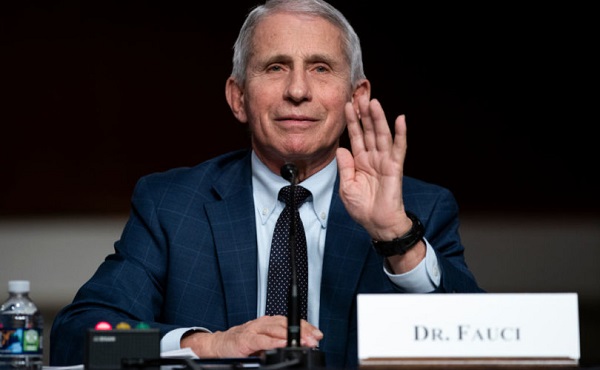Great Reset
Government Admission: Biden Parole Flights Create Security ‘Vulnerabilities’ at U.S. Airports Government Admission: Biden Parole Flights Create Security ‘Vulnerabilities’ at U.S. Airports

From the Center for Immigration Studies
DHS still refusing to say which airports are receiving inadmissible aliens from abroad
But while large immigrant-receiving cities and media lay blame for the influx on Texas Republican Gov. Greg Abbott’s busing program, CBP has withheld from the Center – and apparently will not disclose – the names of the 43 U.S. airports that have received 320,000 inadmissible aliens from January through December 2023, nor the foreign airports from which they departed. The agency’s lawyers have cited a general “law enforcement exception” without elaborating – until recently – on how releasing airport locations would harm public safety beyond citing “the sensitivity of the information.”
Now, though, CIS’s litigation has yielded a novel and newsworthy answer from the government: The public can’t know the receiving airports because those hundreds of thousands of CBP-authorized arrivals have created such “operational vulnerabilities” at airports that “bad actors” could undermine law enforcement efforts to “secure the United States border” if they knew the volume of CBP One traffic processed at each port of entry.
In short, the Biden administration’s legally dubious program to fly inadmissible aliens over the border and directly to U.S. airports has allegedly created law enforcement vulnerabilities too grave to release publicly, lest “bad actors” take advantage of them to inflict harm on public safety. Or, more specifically, here’s how CBP’s lawyers, in email communications with CIS and summarized in a CIS Joint Status Filing, characterized FOIA’s law enforcement exception (b)(7)(E) in explaining their refusal to release just the domestic U.S. airport locations:
Exception (b)(7)(E) has been applied to the identifying information for air ports of entry, which, if disclosed would reveal information about the relative number of individuals arriving, and thus resources expended at particular airports which would, either standing alone or combined with other information, reveal operational vulnerabilities that could be exploited by bad actors altering their patterns of conduct, adopting new methods of operation, and taking other countermeasures, thereby undermining CBP’s law enforcement efforts to secure the United States borders.
The agency’s attorneys floated a similar argument for withholding the locations of foreign departure airports, adding only that “bad actors” abroad who found out about the “resources expended toward travelers arriving from particular airports” could “extrapolate” from the numbers leaving foreign airports to identify the receiving U.S. airports and then undermine law enforcement’s ability to secure the border (which includes international airports).
The program at the center of the FOIA litigation is perhaps the most enigmatic and least-known of the Biden administration’s uses of the CBP One cell phone scheduling app, even though it is responsible for almost invisibly importing by air 320,000 aliens with no legal right to enter the United States since it got underway in late 2022. It remains part of the administration’s “lawful pathways” strategy, with its stated purpose being to reduce the number of illegal border entries between ports of entry. The countries whose citizens are eligible are Cuba, Haiti, Venezuela, Nicaragua, El Salvador, Guatemala, Honduras, Colombia, and Ecuador.
Under these legally dubious parole programs, aliens who cannot legally enter the country use the CBP One app to apply for travel authorization and temporary humanitarian release from those airports. The parole program allows for two-year periods of legal status during which adults are eligible for work authorization.
The government characterizes these programs as “family reunification programs”.
While seven of the nationalities, excluding Venezuelans and Nicaraguans, can claim eligibility under older family reunification parole programs, all can also just fly in if they can show they have a non-family financial sponsor (which can even be “an organization, business, or other entity”) and meet other requirements, such as owning a valid passport and passing security checks based on biometric information provided through CBP One.
Upon receiving authorization from Washington, they buy air passage to U.S. international airports where CBP personnel process them for release in short order. All are said to be responsible for paying for their own airfare.
They and inadmissible aliens from many dozens of other countries also get this parole benefit at eight U.S.-Mexico land ports of entry. That separate parole program has brought in another 420,000 immigrants from nearly 100 nations from May 2021 through December 2023, according to CIS lawsuit data updated through December 2023. (See links to the 2023 report below, which reflects data through August)
For most of the past year, big-city mayors and state governors have loudly complained about the hundreds of thousands of foreigners showing up in need of housing, food, medical treatment, clothing, and education, placing extraordinary unfunded financial burdens on local populations. Routinely, politicians and major media outlets have laid blame for the influx on Texas Gov. Greg Abbott’s busing program.
But the airport location information would undoubtedly provide a more accurate and complete picture of what is happening, though the administration would not be able to blame the Texas governor for these arrivals.
The redacted records received by CIS show a clear preference for some airports over others, with a dozen unnamed facilities receiving most of the 320,000.
Release by the government of the airport data would serve an important public interest in that it would provide voters and public officials with information to pressure the Biden government to reduce monthly arrival rates into their cities and states.
Colin M. Farnsworth, CIS’s Chief FOIA Counsel, said the Center rejects the government’s explanation about bad actors exploiting “operational vulnerabilities” at airports on grounds that CBP pre-screens and pre-schedules the arrival of CBP One applicants at each port of entry. He said CIS will litigate for a total release of the airport information.
Bad actors already have access to airport travel volumes, through CBP’s own “Traveler and Conveyance Statistics website.” Its statistics for cities whose travails with migrant arrivals are well-publicized show striking airport arrival increases from FY 2022, before the airlift program, through 2023.
Boston airports, for instance, spiked from 2.3 million during FY 2022 to 3.3 million in 2023, the public CBP website shows. Chicago, another migrant hotspot, rose from 6.3 million airport travelers in FY2022 to 7.9 million in 2023. New York City airports spiked from 17.7 million airport arrivals in 2022 to 22.9 million in 2023.
Related reports from Center for Immigration Studies FOIA litigation are based on data provided through August 2023 and the early part of September 2023. CBP has since provided data for all of September, October, November, and December 2023, which are reflected above in this report.
The following are the prior reports reflecting the earlier data:
- New Records: Biden DHS Has Approved Hundreds of Thousands of Migrants for Secretive Foreign Flights Directly into U.S. Airports
- New Records Unveil Surprising Scope of Secretive ‘CBP One’ Entry Scheme
- Thousands of ‘Special Interest Aliens’ Posing Potential National Security Risks Entering via CBP One App
- Powerful Senator Demands DHS Answer Questions About ‘Special Interest Alien” Approved Entries in CBP One app.
- Why is Biden Quietly Granting ‘Humanitarian Protection’ to Thousands of Mexicans?
International
New York Times publishes chilling new justification for assisted suicide

From LifeSiteNews
Even happy, healthy lives without major issues can warrant needless ending if they are ‘complete.’
Notorious secular “ethicist” Peter Singer has co-authored an opinion piece in The New York Times positing a chilling new rationale for assisted suicide: the determination that one’s life is simply “complete.”
Princeton psychologist Daniel Kahneman died in March 2024 at age 90. His cause of death was not disclosed at the time, but a year later, The Wall Street Journal revealed that Kahneman had emailed friends the day before to tell them he was traveling to Switzerland to avail himself of the country’s legal physician-assisted suicide.
“I think Danny wanted, above all, to avoid a long decline, to go out on his terms, to own his own death,” WSJ journalist and longtime friend of the deceased Jason Zweig wrote. “Maybe the principles of good decision-making that he had so long espoused — rely on data, don’t trust most intuitions, view the evidence in the broadest possible perspective — had little to do with his decision.”
On April 14, The New York Times published a guest essay by the infamous Singer, a pro-infanticide Princeton bioethics professor, and philosophy professor Katarzyna de Lazari-Radek, who shared that they too knew of Kahneman’s plans and that days before he had told them, “I feel I’ve lived my life well, but it’s a feeling. I’m just reasonably happy with what I’ve done. I would say if there is an objective point of view, then I’m totally irrelevant to it. If you look at the universe and the complexity of the universe, what I do with my day cannot be relevant.”
“I have believed since I was a teenager that the miseries and indignities of the last years of life are superfluous, and I am acting on that belief,” Kahneman reportedly said. “I am still active, enjoying many things in life (except the daily news) and will die a happy man. But my kidneys are on their last legs, the frequency of mental lapses is increasing, and I am 90 years old. It is time to go.”
Singer and de Lazari-Radek argued that this was an eminently reasonable conclusion. “(I)f, after careful reflection, you decide that your life is complete and remain firmly of that view for some time, you are the best judge of what is good for you,” they wrote. “This is especially clear in the case of people who are at an age at which they cannot hope for improvement in their quality of life.”
“(I)f we are to live well to the end, we need to be able to freely discuss when a life is complete, without shame or taboo,” the authors added. “Such a discussion may help people to know what they really want. We may regret their decisions, but we should respect their choices and allow them to end their lives with dignity.”
Pro-lifers have long warned that the euthanasia movement devalues life and preys on the ill and distraught by making serious medical issues (even non-terminal ones) into grounds to end one’s life. But Singer and de Lazari-Radek’s essay marks a new extreme beyond that point by asserting that even happy, healthy lives without major issues can warrant needless ending.
“Instead of seeing every human life as having inherent value and dignity, Singer sees life as transactional: something you are allowed to keep by being happy, able-bodied, and productive — and something to be taken away if you are not,” Cassy Cooke wrote at Live Action News.
In America, nine states plus the District of Columbia currently allow assisted suicide. In March, Delaware took a step closer to becoming the 10th with its own legalization bill, although it has yet to become law. Another bill recently failed in Maryland.
Support is available to talk those struggling with suicidal thoughts out of ending their lives. The Suicide & Crisis Lifeline can be reached by calling or texting 988.
Business
‘Great Reset’ champion Klaus Schwab resigns from WEF

From LifeSiteNews
Schwab’s World Economic Forum became a globalist hub for population control, radical climate agenda, and transhuman ideology under his decades-long leadership.
Klaus Schwab, founder of the World Economic Forum and the face of the NGO’s elitist annual get-together in Davos, Switzerland, has resigned as chair of WEF.
Over the decades, but especially over the past several years, the WEF’s Davos annual symposium has become a lightning rod for conservative criticism due to the agendas being pushed there by the elites. As the Associated Press noted:
Widely regarded as a cheerleader for globalization, the WEF’s Davos gathering has in recent years drawn criticism from opponents on both left and right as an elitist talking shop detached from lives of ordinary people.
While WEF itself had no formal power, the annual Davos meeting brought together many of the world’s wealthiest and most influential figures, contributing to Schwab’s personal worth and influence.
Schwab’s resignation on April 20 was announced by the Geneva-based WEF on April 21, but did not indicate why the 88-year-old was resigning. “Following my recent announcement, and as I enter my 88th year, I have decided to step down from the position of Chair and as a member of the Board of Trustees, with immediate effect,” Schwab said in a brief statement. He gave no indication of what he plans to do next.
Schwab founded the World Economic Forum – originally the European Management Forum – in 1971, and its initial mission was to assist European business leaders in competing with American business and to learn from U.S. models and innovation. However, the mission soon expanded to the development of a global economic agenda.
Schwab detailed his own agenda in several books, including The Fourth Industrial Revolution (2016), in which he described the rise of a new industrial era in which technologies such artificial intelligence, gene editing, and advanced robotics would blur the lines between the digital, physical, and biological worlds. Schwab wrote:
We stand on the brink of a technological revolution that will fundamentally alter the way we live, work, and relate to one another. In its scale, scope, and complexity, the transformation will be unlike anything humankind has experienced before. We do not yet know just how it will unfold, but one thing is clear: the response to it must be integrated and comprehensive, involving all stakeholders of the global polity, from the public and private sectors to academia and civil society …
The Fourth Industrial Revolution, finally, will change not only what we do but also who we are. It will affect our identity and all the issues associated with it: our sense of privacy, our notions of ownership, our consumption patterns, the time we devote to work and leisure, and how we develop our careers, cultivate our skills, meet people, and nurture relationships. It is already changing our health and leading to a “quantified” self, and sooner than we think it may lead to human augmentation.
How? Microchips implanted into humans, for one. Schwab was a tech optimist who appeared to heartily welcome transhumanism; in a 2016 interview with France 24 discussing his book, he stated:
And then you have the microchip, which will be implanted, probably within the next ten years, first to open your car, your home, or to do your passport, your payments, and then it will be in your body to monitor your health.
In 2020, mere months into the pandemic, Schwab published COVID-19: The Great Reset, in which he detailed his view of the opportunity presented by the growing global crisis. According to Schwab, the crisis was an opportunity for a global reset that included “stakeholder capitalism,” in which corporations could integrate social and environmental goals into their operations, especially working toward “net-zero emissions” and a massive transition to green energy, and “harnessing” the Fourth Industrial Revolution, including artificial intelligence and automation.
Much of Schwab’s personal wealth came from running the World Economic Forum; as chairman, he earned an annual salary of 1 million Swiss francs (approximately $1 million USD), and the WEF was supported financially through membership fees from over 1,000 companies worldwide as well as significant contributions from organizations such as the Bill & Melinda Gates Foundation. Vice Chairman Peter Brabeck-Letmathe is now serving as interim chairman until his replacement has been selected.
-

 2025 Federal Election18 hours ago
2025 Federal Election18 hours agoBREAKING: THE FEDERAL BRIEF THAT SHOULD SINK CARNEY
-

 2025 Federal Election19 hours ago
2025 Federal Election19 hours agoCHINESE ELECTION THREAT WARNING: Conservative Candidate Joe Tay Paused Public Campaign
-

 2025 Federal Election1 day ago
2025 Federal Election1 day agoOttawa Confirms China interfering with 2025 federal election: Beijing Seeks to Block Joe Tay’s Election
-

 2025 Federal Election1 day ago
2025 Federal Election1 day agoReal Homes vs. Modular Shoeboxes: The Housing Battle Between Poilievre and Carney
-

 2025 Federal Election2 days ago
2025 Federal Election2 days agoCarney’s budget means more debt than Trudeau’s
-

 International2 days ago
International2 days agoPope Francis has died aged 88
-

 Business8 hours ago
Business8 hours agoHudson’s Bay Bid Raises Red Flags Over Foreign Influence
-

 Business2 days ago
Business2 days agoCanada Urgently Needs A Watchdog For Government Waste


